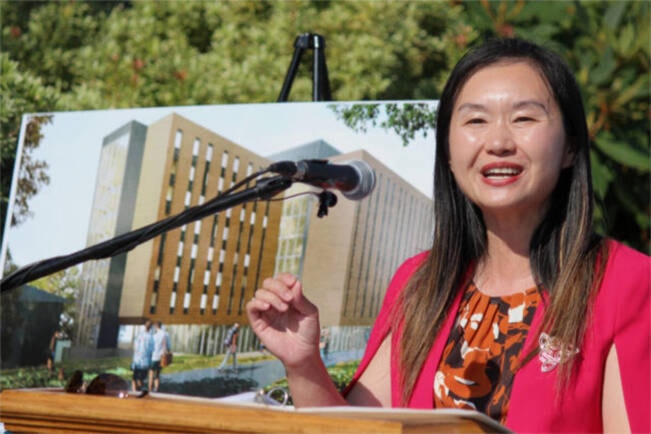BY THARINI PRAKASH
Fitting in while sticking out, international students are the type of demographic who are unplanned for within the community.
Full disclosure. I’m one of them. But as an architect and a current international graduate student studying community planning in Nanaimo, I might know a thing or two about the vicious circle of this housing need to accommodate this unplanned influx.
If you are a renter in Nanaimo, chances are you’ve been burnt by rental inflation. Basement suites are one of the cheapest options in the rental market, which is in part the cause and effect of the housing demand in B.C. If you’re a homeowner or sub-letting, there’s a good chance, dwelling in your basement or in an underutilized spare bedroom, is an international student who has the lowest budget to spend on rent.
Over the past five years, the number of international college students more than doubled, rising from 60,318 enrolments in 2015-16 to 153,360 in 2019-20. There are never enough places and never the right one on the right budget.
More than one in five international students in Canada are in B.C., so why is this population influx so unplanned? With the current housing shortage in mind, how might one seamlessly plan a nesting of this inseparable part of socio-economic growth within Nanaimo’s existing urban fabric?
International students become integral to cities, contributing to the local culture and economy, and we play a key role in shaping communities. We work part-time jobs wherever we can get them. Chances are when you picked up your morning coffee, it was an international student who made it. We are everywhere and nowhere at the same time.
Proximity to school, the downtown, recreation opportunities and public transit are some top priorities for student housing. This concentration of needs results in a dramatic imbalance between supply and demand at the core of B.C.’s housing problem. But it boils down to affordability, which results in the lookout for shared spaces within this concentration.
The province is providing $87 million toward a $87.8-million project at Vancouver Island University that will increase on-campus student accommodation by more than 50 per cent: from 536 beds to 802 beds. Building denser and close to campus is the best call, but this nine-storey housing should be considered a starting point instead of an end goal as it does not match demand.
Providing affordable mixed-use developments with higher density at closer proximity to schools can greatly benefit the community collectively. However, it goes without saying that new developments are expensive. Considering that so much of the existing rental stock is private homes, the latest trend is opening basement suites and spare bedrooms. The aging population and empty-nesters can greatly benefit from renting out unused spaces, while exchanging community values with the student tenant.
Nanaimo is capturing net migration and most students moving here seek long-term opportunities. Building denser might change the formula to a self-healing rental market, relieving the ripple effect faced by the community.
So let students lurk in your basement or perhaps a bedroom. It might just be the solution to rehabilitate housing affordability while we navigate the opportunity to gently build new close to campus.
Tharini Prakash is a master of community planning student at Vancouver Island University.
OPINION: City streets not just for cars, but for community
OPINION: ‘Missing middle’ homes could help in housing crisis
editor@nanaimobulletin.com
Like us on Facebook and follow us on Twitter
